Food Theory II - Blog #1 - Purchasing and Cooking Meat
- felipegombossy
- 26 de jan. de 2021
- 4 min de leitura
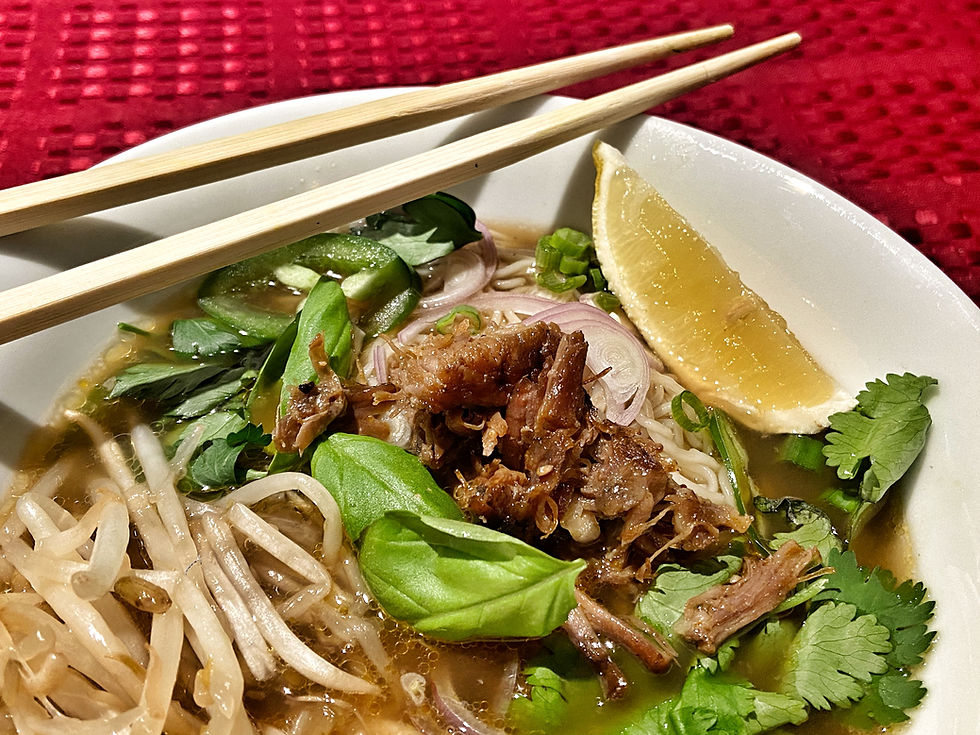

In 2004, Fergus Henderson, a renowned British chef, launched a book called "The Whole Beast - Nose to Tail" where he helped the food industry worldwide to create a philosophy of cooking and using every part of an animal. In terms of sustainability, the idea behind is to avoid food waste and slash the costs. Buying a whole or half share of an animal, you'll probably get the popular cuts cheaper than buying just one cut from a supplier.
Based on this philosophy, I've decided to cook oxtail. Oxtail is also considered an offcut, even though its flavour is fantastic and very characteristic. Some people say that originally oxtail has started to be used in France, during the French Revolution. The recipe travelled to other countries and became popular in Great Britain, Korea. Other people claim that the origin dates back to Roman times, and the "Rabo de Toro" (bull tail) is actually an Andalusian creation, traditionally made after the bullfights.
Well, my opinion is that the most essential thing about oxtail isn't its origin, but its cost versus flavour. My first time trying it was with my grandmother, and it's still fresh in my memory the day we grabbed the tail bones and ate the meat directly from the bones. Like Vikings or something. The juice running down to our elbows. One of my oldest memories regarding culinary.
Since I've recently arrived in Canada, I decided to mix different nations and traditions, just like Toronto. I went to a Portuguese butcher shop called "O Nosso Talho" at Bloor x Dufferin and asked for a nice fresh oxtail. I'm still unsure if this cut is famous or not in Canada, but It isn't a cat that you find in mainstream supermarkets. Even in St. Lawerence Mkt, they ran out. For a $7.99/lb you may think that is a cheap cut. However, I guess that probably 2/3 of the weight is just bones.
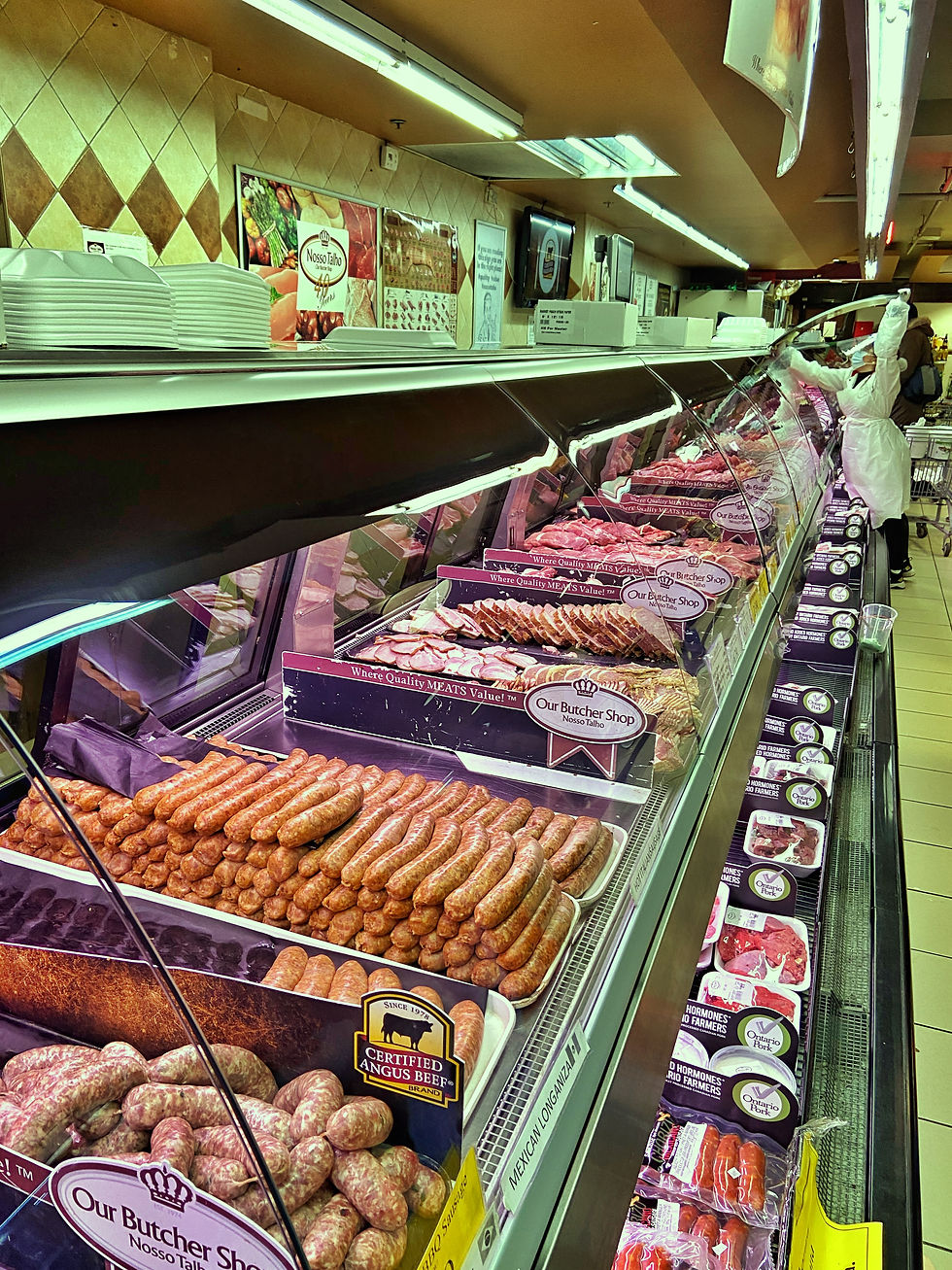

The main characteristic of oxtail is its collagen, making the meat gelatinous. Very rich in flavour, you get your hands sticky after eating it because of the collagen. The cut is very skinned and cut into sections, and each tailbone carries some marrow in the centre. It is a hard meat full of connective tissues; therefore the low-and-slow method is required (low temperature for an extended period). This particular oxtail is from a AAA Grass-Fed Cattle.
I could cook an excellent ragu, or a stew, or just shred it and serve with polenta and watercress. However, since I'm Brazilian, I decided to prepare a pho recipe. Nothing to do with the fact the I'm Brazilian. I just love pho because of its complexity and simplicity at the same time. And lots of different layers of flavour.
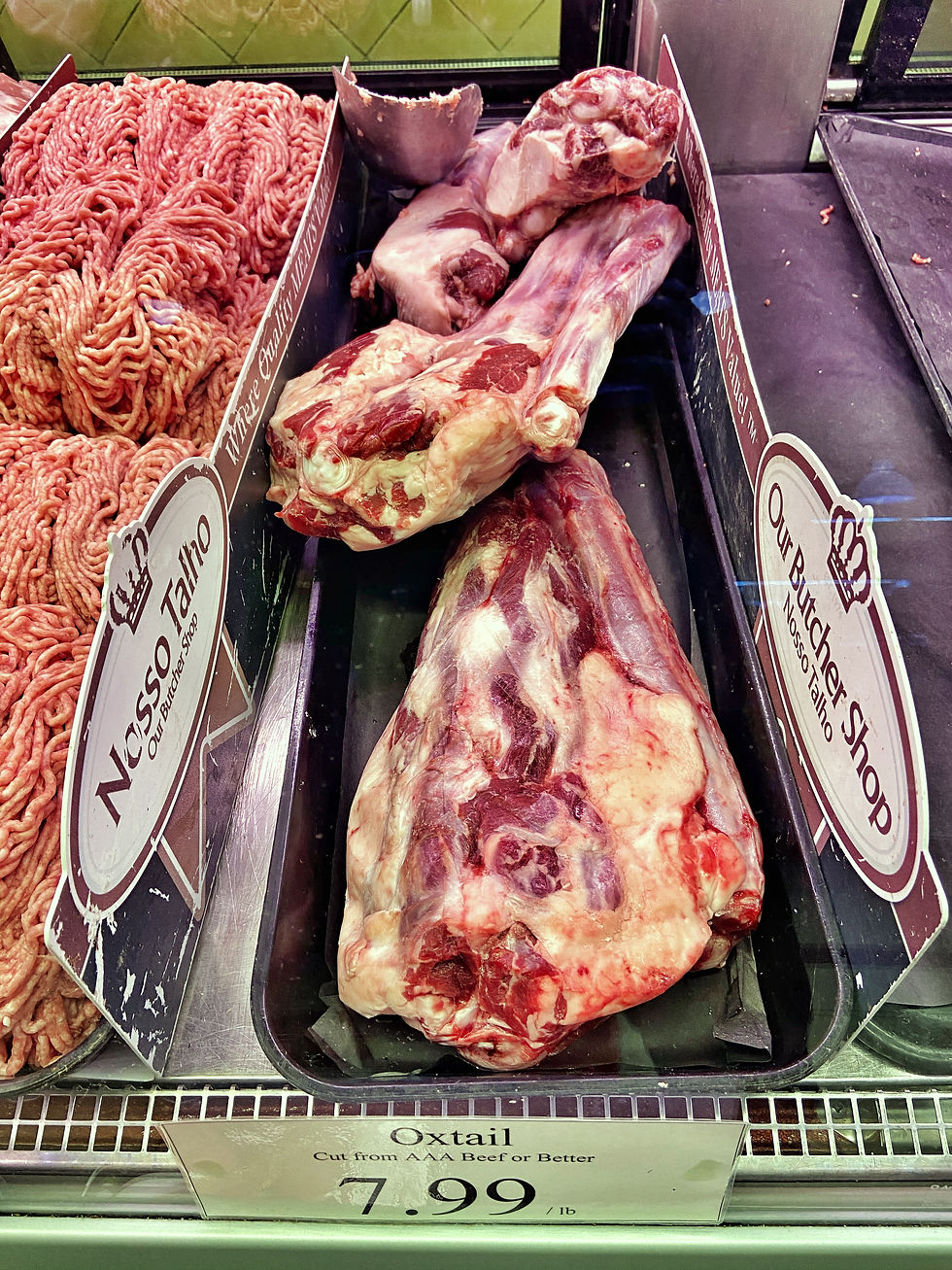
So, let's get to the recipe: OXTAIL PHO
Ingredients:
· 10-12 quart stockpot
· 2-3 lbs of grass-fed oxtail
· 2 gallons (8 quarts) of filtered water
· 4 inch piece of ginger
· 1 large onion
· 5 whole star anise
· 4 whole cloves
· 1 cinnamon stick
· 5 whole cardamom pods
· 1 tsp fennel seeds
· 1/2 tsp whole peppercorns
· 3 bay leaves
· Fermented wild-caught fish sauce
· Rice noodles (Bánh Phở)
Accompaniments:
· Bean sprouts
· Fresh basil
· Fresh cilantro
· Fresh scallions or green onion
· Lemon wedges
· Jalapeño coins
· Sriracha sauce
· Red onion sliced
Preparation:
Step 1 – Place the oxtail in a strainer and rinse under cold water for a minute or so.
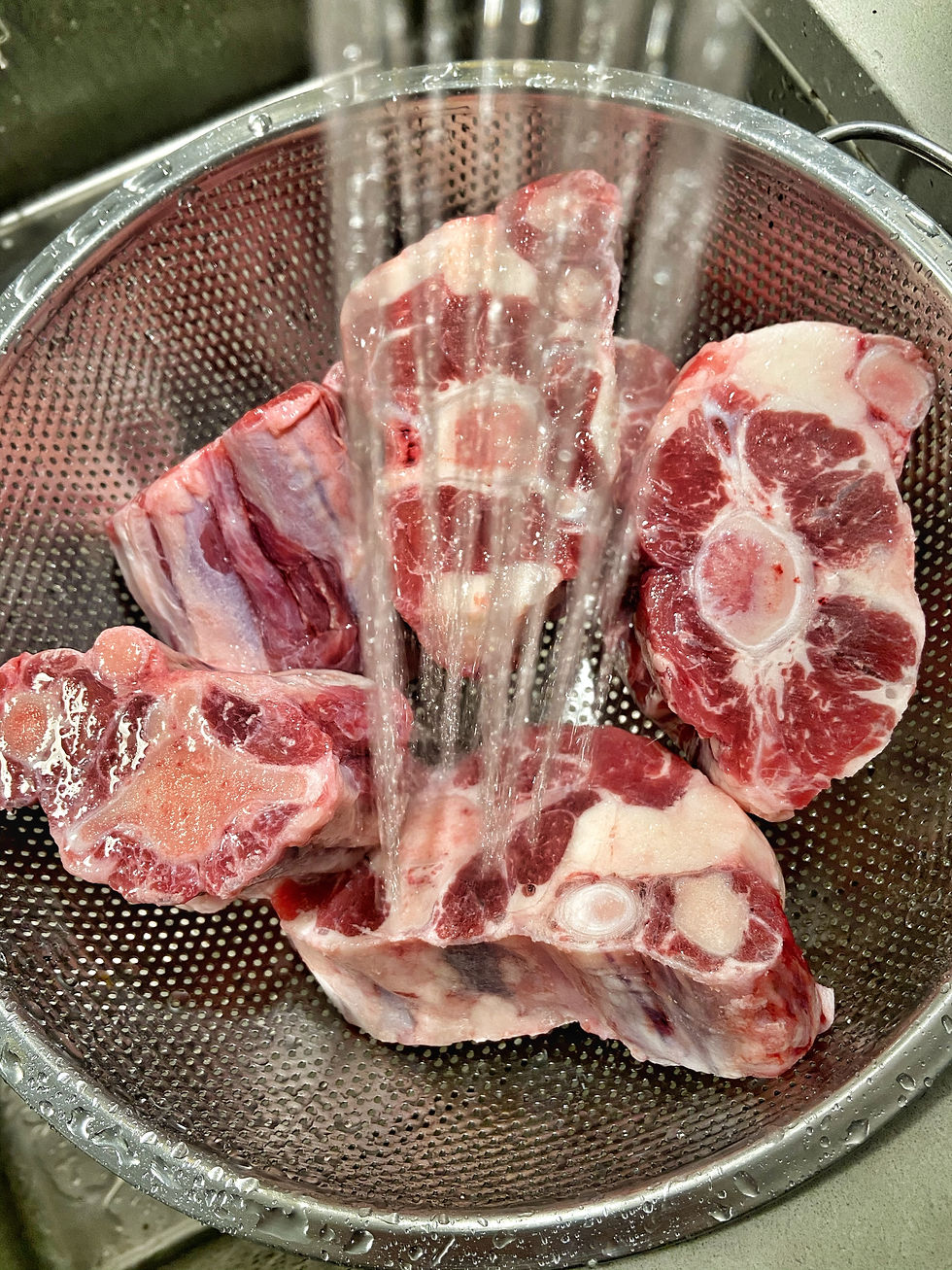
Step 2 – Place the oxtail in a large pot and fill with cold water and bring to a boil.
Step 3 – Cut the onion in half and place it face down with the ginger in a baking pan. Broil in the oven for about 15 minutes or till the onion's outer layer to almost burning.
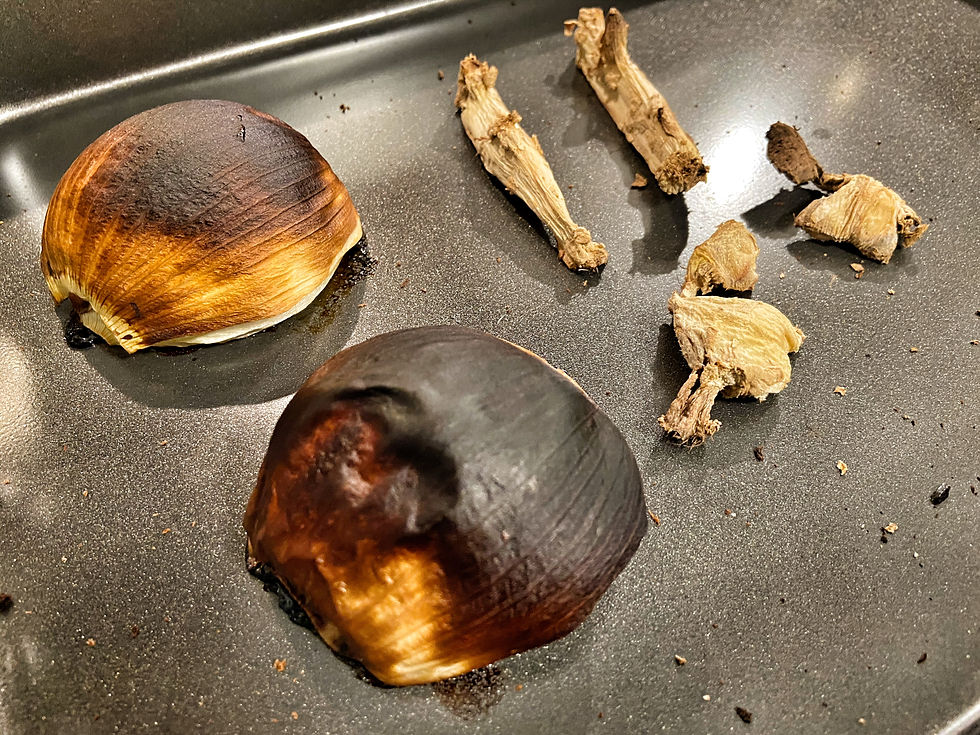
Step 4 – Notice that the pot with the oxtail will start foaming. Skim and throw it away. Strain and rinse the oxtail again. Replace the oxtail in a large pot again and fill the pot with clean water.
Step 5 – Remove the charred outer from the onion and cut the ginger into smaller pieces. Add them to the pot.
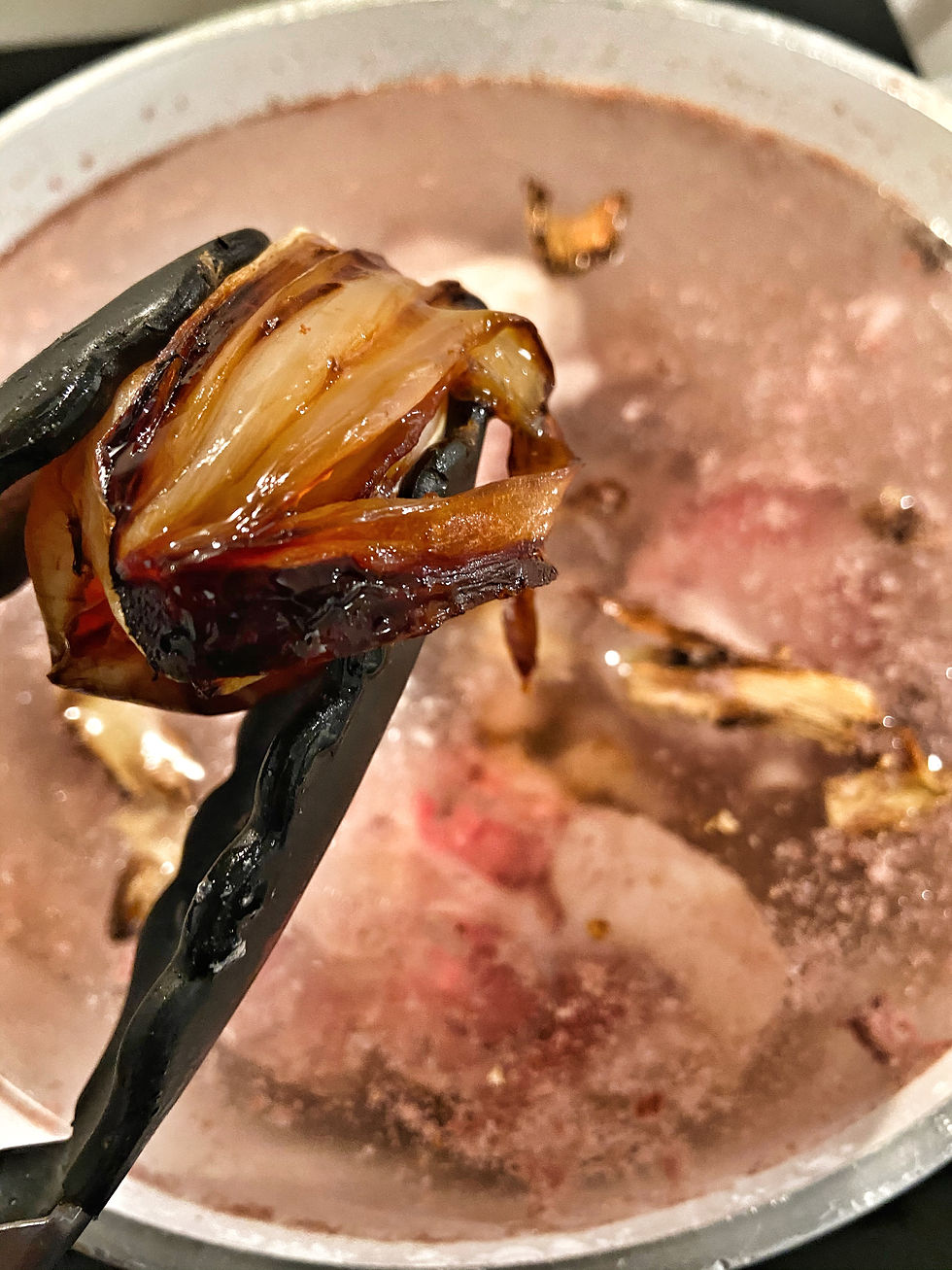
Step 6 – In a skillet, toast your aromatics: anise, cloves, cinnamon stick, cardamom, fennel seeds.

Step 7 – In a sachet, mix the toasted aromatics with bay leaves and peppercorns. Place the bag of spices in the pot.
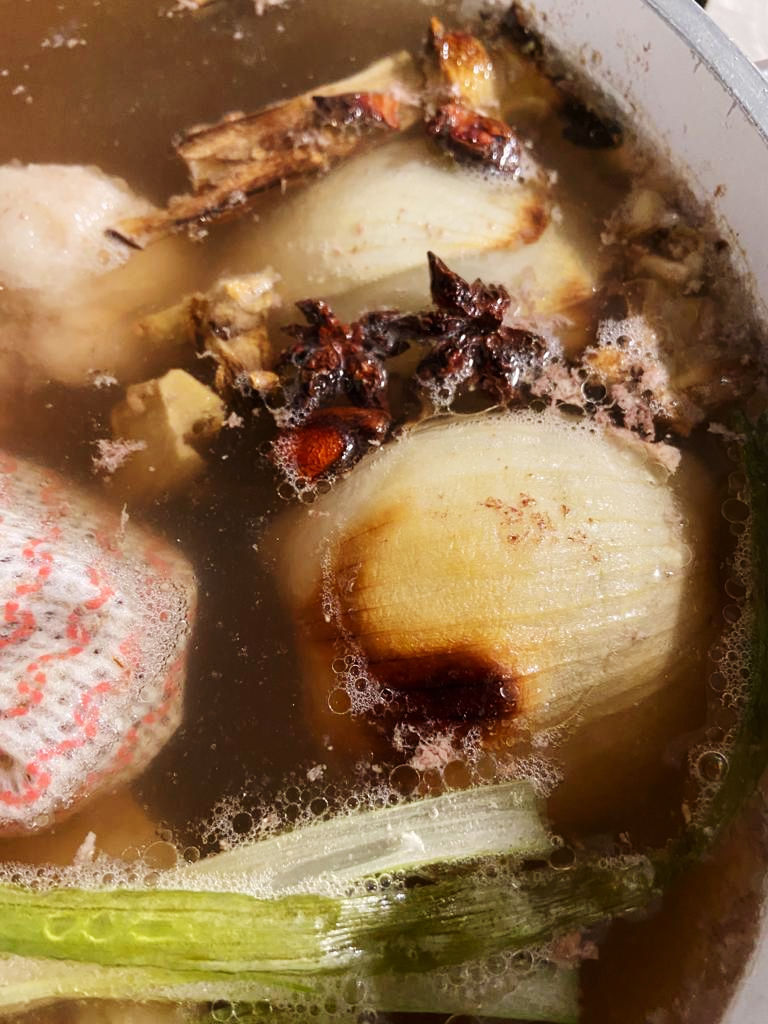
Step 8 – Bring the pot to a boil, cover, reduce the heat to a low simmer and simmer for 10 hours.
10 hours later…….
Step 9 – Add the rice noodles to boiling water, and remove from the heat. Allow soaking for a while. Be careful to not over soak the noodle.
Step 10 – Slice your lemon wedges, chop your cilantro, green onion and basil, sliced jalapeños and red onion, plate your bean sprouts and grab your sriracha and fish sauces.
Step 11 – Strain the oxtail stock, set aside the oxtails and let them cold a bit. Then, shred all the meat from it.

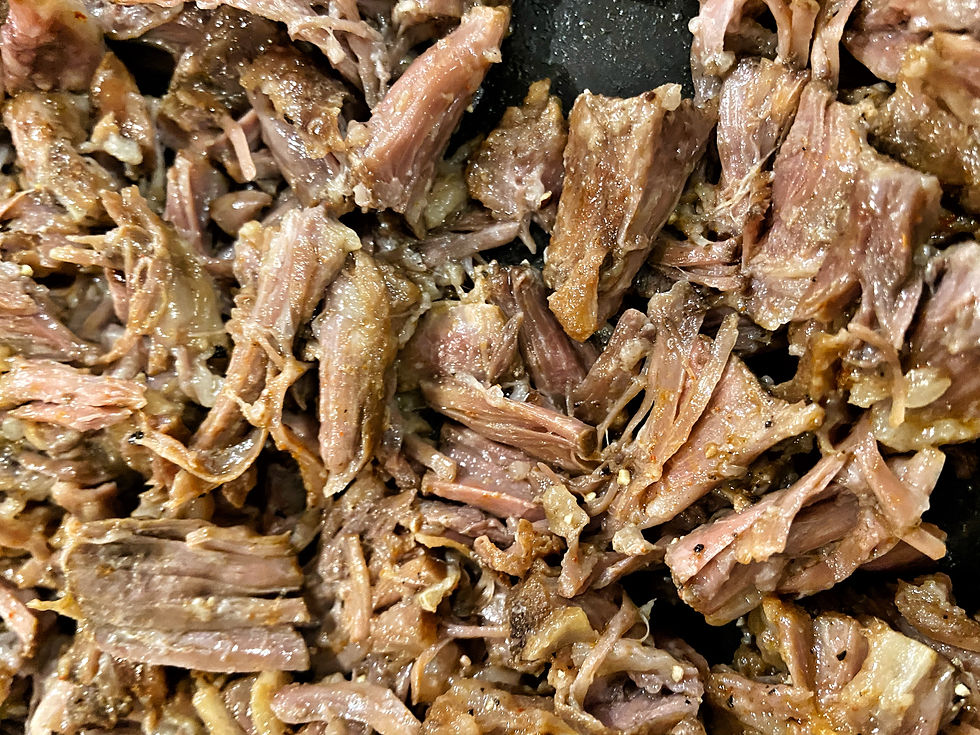
Step 12 – In a skillet, season and brown the shredded meat for a while. Also season the stock with salt, ground black pepper, paprika, sriracha, and fish sauce to taste.
Step 13 – Time to have fun!!!!! Place the noodle, jalapeño, some of the meat and the bean sprouts in the bottom of a ceramic bowl. Then fill the bowl with the stock.

Step 14 – Garnish with the cilantro, basil, green onions, and lemon wedges and knock yourself out.
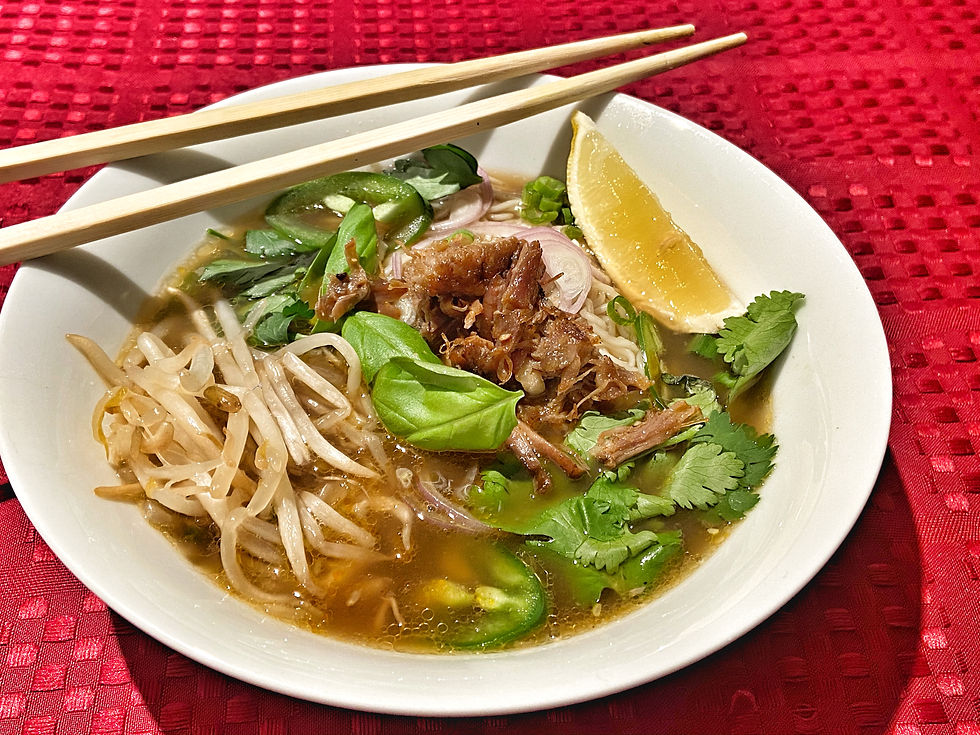
The total amount of oxtail I purchased (2.8lb) was enough to serve 7 Phos. Some of the spices aren't cheap (anise and cardamom pods). The greens and sprouts are relatively inexpensive. So, I would say that each bowl costs approximately CA$4 to CA$4.50. In a restaurant, and following the principle that food cost should come out at or below 30%, this dish, with oxtail topping, should cost CA$12 at least.
Pho is just like a burger. I understand that you can find in the city pho for CA$6, however, in this particular recipe, I used just the best spices and served with a generous portion of oxtail meat as well.
How much would you pay for this tasty bowl of Pho?
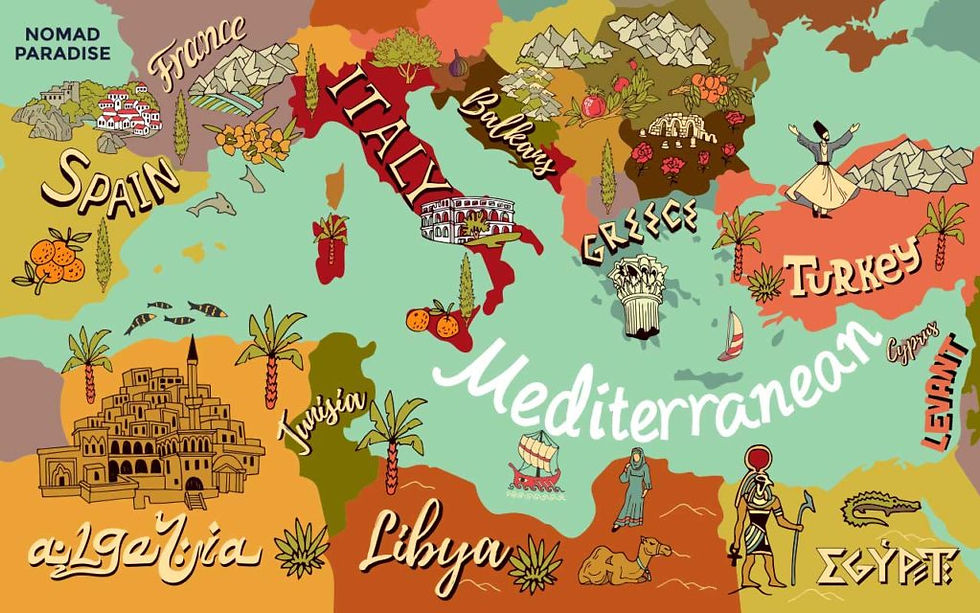


Comentários